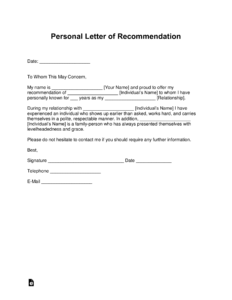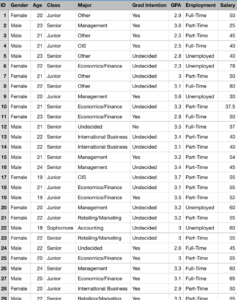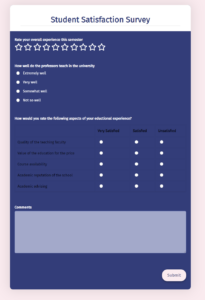Utilizing such a structure increases the likelihood of receiving strong, well-considered recommendations. It equips recommenders with the necessary context to effectively articulate the applicant’s strengths and suitability for the desired opportunity, ultimately bolstering the applicant’s prospects. Moreover, it demonstrates professionalism and organization on the part of the applicant.
The following sections will delve into the specific components of effectively designed structures for recommendation requests, offering practical examples and actionable advice.
Key Components of an Effective Request
Well-structured requests for academic recommendations typically incorporate several key elements to ensure clarity and facilitate a comprehensive response.
1. Applicant Information: This section should include the applicant’s full name, contact information, and a brief statement of the applicant’s goals (e.g., the specific program or position being sought). This contextualizes the request for the recommender.
2. Opportunity Details: Clear and concise information about the opportunity, including the institution or organization, program name, and deadline for submission, is crucial. Providing a link to the application or website can be beneficial.
3. Context of Relationship: A brief description of the relationship between the applicant and recommender, including the duration and nature of the interaction (e.g., course taken, project completed), helps the recommender frame their assessment.
4. Relevant Skills and Qualities: Highlighting the specific skills, qualities, or experiences the applicant wishes the recommender to address helps focus the recommendation and ensures alignment with the opportunity’s requirements.
5. Supporting Materials: Providing supplemental materials, such as a resume, transcript, or personal statement, can refresh the recommender’s memory and offer valuable context for crafting a compelling recommendation.
6. Submission Instructions: Explicit instructions regarding the submission method (e.g., online portal, email, mail) and any required login credentials should be clearly stated.
7. Expression of Gratitude: Acknowledging the recommender’s time and effort with a sincere expression of gratitude is essential for maintaining professional courtesy.
Incorporating these elements ensures the recommender has the necessary information and context to write a strong, targeted, and effective recommendation, maximizing the applicant’s chances of success.
How to Create an Academic Reference Request
Creating a well-structured request is essential for obtaining effective recommendations. A thoughtful approach ensures recommenders possess the necessary information to write compelling testimonials.
1: Compile Applicant Information: Begin by gathering the applicant’s full name, current contact information, and a concise statement of their academic or professional goals. This provides the recommender with essential context.
2: Detail the Opportunity: Clearly outline the specific opportunity for which the recommendation is needed. Include the institution’s name, program or position title, and the application deadline. A direct link to the application, if available, is highly recommended.
3: Describe the Relationship: Briefly explain the nature and duration of the applicant’s relationship with the potential recommender. This clarifies the context of their interaction and allows the recommender to speak to specific experiences.
4: Highlight Relevant Skills: Specify the skills, qualities, or experiences the applicant wishes the recommender to emphasize. This ensures the recommendation aligns with the opportunity’s requirements.
5: Provide Supporting Documents: Offer supporting materials, such as a resume, transcript, or personal statement. These documents refresh the recommender’s recollection of the applicant’s qualifications and accomplishments.
6: Outline Submission Instructions: Clearly state the preferred submission method, whether through an online portal, email, or postal mail. Provide any necessary login credentials or specific instructions for completing the recommendation.
7: Express Gratitude: Conclude the request with a sincere expression of gratitude. Acknowledging the recommender’s time and effort demonstrates professional courtesy.
A comprehensive request, incorporating these elements, facilitates the creation of strong, targeted recommendations, thereby significantly increasing the applicant’s chances of success.
Effective utilization of structured formats for soliciting academic recommendations is crucial for applicants seeking to distinguish themselves in competitive academic environments. Such structured formats ensure clarity, comprehensiveness, and efficiency throughout the recommendation process, benefiting both the applicant and the recommender. By providing a clear framework and offering all necessary information, these formats enable recommenders to craft compelling testimonials that effectively showcase the applicant’s qualifications and potential.
Ultimately, a well-crafted request serves as a strategic tool for applicants, empowering them to secure strong endorsements that significantly enhance their application portfolios and increase their prospects for admission, scholarships, or research positions. Investing time and effort in developing these requests demonstrates professionalism and forethought, qualities highly valued in academic pursuits.



